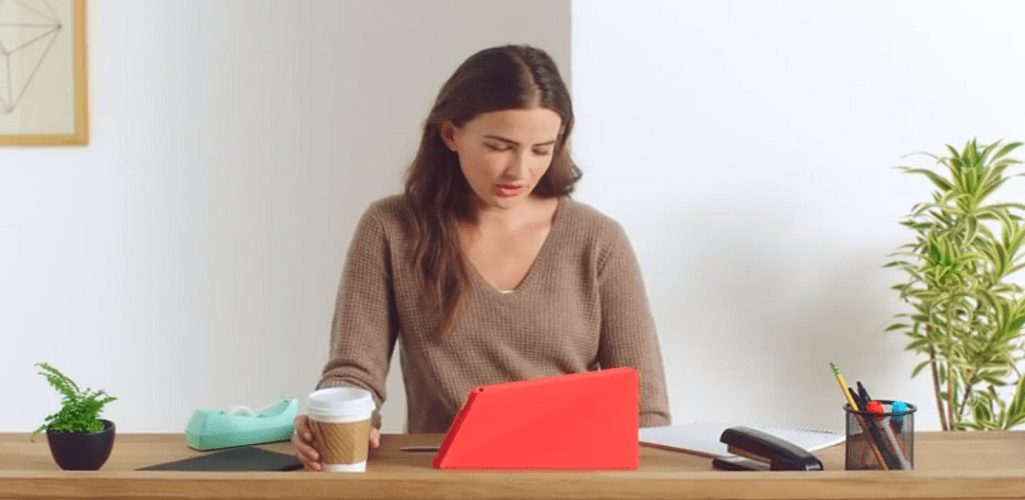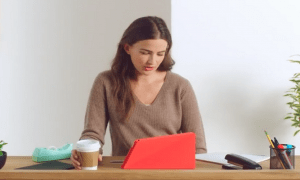How to Connect the Kindle Fire HD to ADB for USB Debugging

Before you can start doing hacks or serious customization with your Kindle Fire HD, you need to connect it to the computer at the developer level.
Before you can start doing hacks or serious customization with your Kindle Fire HD, you need to connect it to the computer at the developer level. By default it can mount storage, except that doesn’t do much other than allow you to transfer files. To connect the Kindle to ADB you need USB debugging enabled, Even then your Fire still won’t connect to your PC without some tweaking.


Photo: Austin Krause
Kindle Fire HD to ADB for USB Debugging
Before getting started, you’ll need either the Android SDK, or the Kindle Fire HD USB driver installer for Windows.
or
- Download the Kindle Fire HD usb driver installer for Windows
- Also download stand-alone ADB if you don’t go the SDK route, it’s handy to have for testing the connection. (download mirror)
also
- Is ADB enabled on your Kindle? Follow this to enable it before you get started.
I’ll start this guide assuming you have the Android SDK installed. If you prefer to not install it, click here to skip to the next part of this guide.
Amazon has created an external add-on repository for the Android SDK to pull down the latest USB drivers for its Kindle Fire devices. By using the Android SDK to download these drivers, it ensures you’re getting the latest version vs. the above link which may be outdated (but still working) in a month.
First off we need to open up the SDK Manager as an Administrator. This can be done with a quick search in the Start Menu and a right click to access the “Run as administrator” context menu option.


In the Android SDK Manager click Tools >> Manage Add-on Sites.


Now click the User Defined Sites tab and then the “New” button. In here you need to enter the following URL and then press OK:
https://kindle-sdk.s3.amazonaws.com/addon.xml
Once that is in, close out of the Add-on Sites window.


Back in the main window of the SDK manager, there will now be new options labeled under the Kindle Fire HD. The API is optional, but if you’re a developer you might as well grab them. There are three new Kindle Fire entries in total, and the most important one is under the Extras category titled Kindle Fire USB Driver. Make sure you check each one and then click “Install (3) Packages.”


In the installation, window select Accept All and then click the Install button. Once the download and install finish you can exit the SDK.


You should have the Kindle Fire ADB driver installer downloaded on your computer now, and it will be the latest version straight from the Amazon repository source. You can find it in C:\Program Files (x86)\Android\android-sdk\extras\amazon\kindle_fire_usb_driver unless you installed the SDK to a different directory (in which case it will be in the directory you installed the SDK).
Now whether you got the Kindle Fire HD USB driver from the Amazon Add-on site, or from the link above, the rest of the instructions are the same.
Run the Kindle Fire ADB drivers.exe file that you just downloaded.


It will open up with a self-extractor. Select a convenient location on your system and then click Install.


Another installer will pop up. Just click through and Install everything that comes up at this point. Most noticeable will be a Windows Security window asking you specifically install the device software, click Install to continue.


When the installer is done it will let you know. Click Finish.


Now to check if it is working requires the use of ADB. If you are using the stand-alone version just type the following into the prompt:
adb devices
In return the window should list the device as attached like in the screenshot below. If it doesn’t show up you can try restarting ADB by typing in the following and then retrying:
adb kill-server
adb start-server
And of course, if you have the SDK installed you can just use its built-in ADB by entering the commands from the android-sdk >> platform-tools directory.


That’s all there is to setting up the Kindle Fire HD to connect to your computer over ADB and USB debugging in Windows. If you run into any problems, feel free to drop a comment below and I’ll help you out.
5 Comments
Leave a Reply
Leave a Reply





jt
January 24, 2014 at 10:19 am
Your link for”Download the Kindle Fire HD usb driver installer for Windows”
seems to contain malware. It changed the home page on Chrome and not sure what else it did yet.
Brian Burgess
January 24, 2014 at 11:11 am
@jt Try this link which points to the XDA Developer’s forum:
http://forum.xda-developers.com/showthread.php?t=1890413
Unfortunately, when we write articles, links change, when the article is written, we make 100% sure there is no malware or bloatware installed. If something tries to install a homepage change or change your search engine, we’ll point that out.
Alice
December 29, 2014 at 7:54 pm
Excellent tutorial. I was stymied trying to get my Fire HDX, Windows 8, and Android Studio to play together. Simple instructions that actually worked — thank you!
ALEX
December 7, 2015 at 12:37 pm
Hello,
I bought an Amazon Kindle HD 8.9 tablet possessing the system CyanogenMod 11.
wanting to return it to its original state, I did a factory reset by selecting in the settings. three days since it does not loop restarts and turns on the logo teamnew after having written kindle fire.
how I can solve this problem because I did not know that the Amazon tablet encountered problems (when rooted) during a factory reset
Thank you in advance for your assistance
princely
December 20, 2015 at 2:47 am
hi i wnt to connect to windows xp how do i connect to it nd view data from it. or how can i copy data from it to my pc